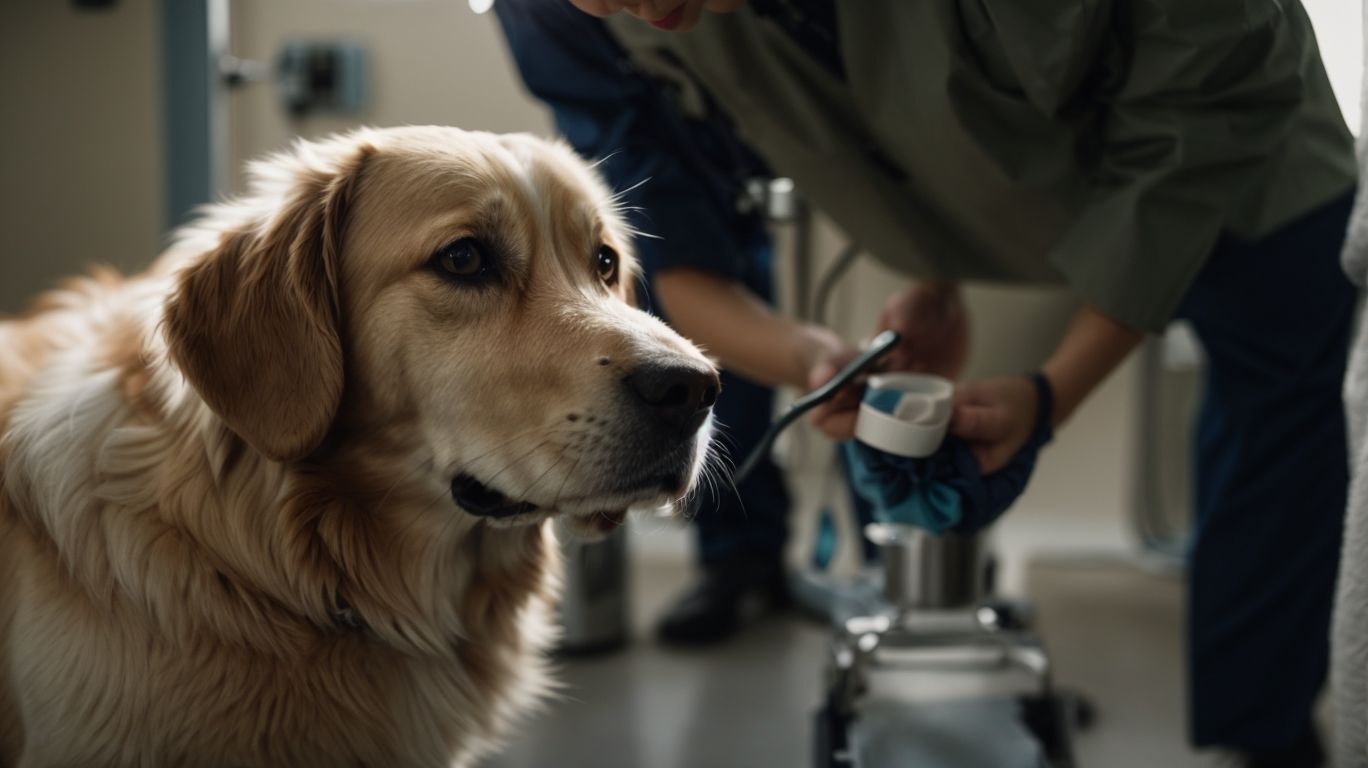
Cancer in Senior Dogs: Early Detection, Symptoms, and Treatment Options
As our furry friends age, they become more susceptible to various health issues, including cancer. In this comprehensive guide, we will explore what cancer in senior dogs entails, the common types of cancer they may experience, and how early detection can make a significant difference in their prognosis.
We will also delve into the warning signs of cancer in senior dogs, the different treatment options available, and how nutrition and exercise can play a role in their care. We will discuss the prognosis for senior dogs with cancer, as well as ways to provide comfort and support to our beloved companions during this challenging time.
Whether you are a dog owner or simply a lover of our four-legged friends, this article aims to provide valuable insights into understanding and managing cancer in senior dogs.
What Is Cancer in Senior Dogs?
Cancer in senior dogs refers to the abnormal growth of cells that can affect various parts of a dog’s body, leading to potentially serious health issues in older canine companions.
As dogs age, their risk of developing cancer increases, with tumors commonly found in organs such as the skin, mammary glands, and bones.
The prevalence of cancer in older dogs is a growing concern for pet owners and veterinarians, often requiring diagnostic tests such as biopsies to determine the nature of the tumors and the appropriate course of treatment.
Cancer in senior dogs can lead to complications such as weight loss, lethargy, and decreased appetite, impacting their quality of life.
What Are the Common Types of Cancer in Senior Dogs?
Several types of cancer can afflict senior dogs, including lymphoma, osteosarcoma, mast cell tumors, and hemangiosarcoma, each presenting distinct symptoms and treatment challenges.
Lymphoma is a common cancer in senior dogs, affecting the lymphatic system and leading to symptoms such as swollen lymph nodes, decreased appetite, and weight loss.
Osteosarcoma, on the other hand, primarily affects the bones, often leading to lameness and pain. Mast cell tumors can develop in various organs, skin, or subcutaneous tissues, causing skin lesions or gastrointestinal issues.
Hemangiosarcoma, though less common, often affects the spleen, liver, or heart, with potential for sudden internal bleeding and life-threatening complications. Detecting these cancers often involves biopsies and imaging tests to assess the extent of metastasis and guide treatment decisions.
How Can Cancer in Senior Dogs Be Detected Early?
Early detection of cancer in senior dogs is crucial for timely intervention and improved treatment outcomes. This necessitates proactive monitoring and regular veterinary assessments for aging canine companions.
This proactive approach allows veterinarians to identify potential malignancies in their early stages, leading to more effective treatment options and a higher likelihood of successful outcomes.
Regular check-ups, diagnostic imaging, and blood tests play a vital role in this process. They help in identifying symptoms and abnormalities that may indicate the presence of cancer. By conducting these assessments, veterinarians can detect any signs of cancer at an early stage, providing the best possible chance for successful treatment and improved quality of life for senior dogs.
What Are the Warning Signs of Cancer in Senior Dogs?
Recognizing the warning signs of cancer in senior dogs is crucial for initiating timely veterinary care. Symptoms such as unexplained weight loss, lethargy, changes in appetite, difficulty breathing, swollen lymph nodes, pain, and lameness warrant immediate attention.
These symptoms may indicate various types of cancer in senior dogs, such as lymphoma, mast cell tumors, or osteosarcoma.
Senior dogs with cancer might display signs of depression, weakness, and difficulty in performing regular activities.
While prompt veterinary intervention is vital for early diagnosis and treatment, palliative care can also help manage symptoms and maintain the dog’s quality of life.
Recognizing and addressing these symptoms promptly can make a significant difference in the overall well-being and comfort of senior dogs with cancer.
How Can Regular Check-Ups Help Detect Cancer in Senior Dogs?
Regular veterinary check-ups play a pivotal role in the early detection of cancer in senior dogs. These routine examinations are essential for identifying potential malignancies at an early stage, allowing for prompt intervention and treatment.
Diagnostic imaging techniques such as X-rays, ultrasound, and MRI can help in visualizing internal structures and detecting any abnormalities. Blood tests can reveal markers indicative of cancer, prompting further investigation.
A comprehensive physical assessment is crucial for evaluating any changes in the dog’s body and behavior, which may suggest the presence of tumors. Early detection facilitates timely initiation of treatment options, such as surgery, chemotherapy, or radiation therapy, and can significantly influence the prognosis.
In cases where malignancies are suspected, a biopsy may be recommended to confirm the diagnosis and guide appropriate therapeutic measures.
What Are the Treatment Options for Cancer in Senior Dogs?
The treatment of cancer in senior dogs encompasses various options, including palliative care, radiation therapy, chemotherapy, and surgical interventions, tailored to address the specific needs and health status of aging canine patients.
Palliative care aims to improve the quality of life for dogs with advanced cancer by reducing pain and discomfort. This can involve radiation therapy, which targets tumors while minimizing damage to healthy tissue. Chemotherapy may also be used to destroy cancer cells and prevent spreading. In some cases, surgery may be recommended to remove tumors or alleviate symptoms. It’s crucial for senior dog owners to collaborate with veterinarians to determine the best treatment plan for their dog’s specific needs.
What Are the Different Types of Treatment for Cancer in Senior Dogs?
The management of cancer in senior dogs involves a range of treatment modalities, including diagnostic biopsies, palliative care, targeted radiation therapy, chemotherapeutic regimens, and potential surgical interventions, each offering unique approaches to address the complexities of cancer in older canine patients.
When it comes to senior dogs, treatment options are customized to address their unique symptoms and prognosis. Diagnostic biopsies are essential in determining the type and severity of cancer, aiding in treatment decisions. Palliative care aims to improve the quality of life for senior dogs by managing symptoms and providing comfort. Targeted radiation therapy and chemotherapy are used to specifically target cancer cells while minimizing harm to healthy tissues. In certain situations, surgery may be an option to remove tumors or alleviate related complications.
What Are the Side Effects of Cancer Treatment in Senior Dogs?
Cancer treatment in senior dogs may entail potential side effects, necessitating careful consideration of palliative measures to mitigate discomfort and maintain the overall quality of life, while also impacting the prognosis for aging canine patients.
It is imperative to recognize that therapies such as chemotherapy and radiation therapy, while aimed at combating cancer, can also lead to adverse reactions in senior dogs. These may include gastrointestinal issues, fatigue, and suppressed immune function.
As a result, veterinary care should encompass comprehensive monitoring and prompt intervention. The management of treatment-related complications demands a tailored approach, with a focus on alleviating discomfort and improving mobility. Prioritizing palliative care in the treatment plan is essential for ensuring the well-being of senior dogs undergoing cancer therapy.
How Can Nutrition and Exercise Help in the Treatment of Cancer in Senior Dogs?
Optimal nutrition and appropriate exercise regimens play a significant role in supporting the treatment of cancer in senior dogs. This contributes to their overall well-being, immune function, and potential treatment outcomes.
It is crucial to consider proper dietary considerations for senior dogs with cancer. This includes ensuring sufficient protein intake and managing weight loss to prevent muscle wasting.
In addition to a proper diet, incorporating regular exercise is also important for senior dogs with cancer. This not only aids in maintaining muscle mass and joint flexibility, but also enhances their mental stimulation, which is vital for their overall health and resilience.
By implementing these measures, we can improve the quality of life for senior dogs undergoing cancer treatment. This fosters a more positive and comfortable aging process for our beloved canine companions.
What Is the Prognosis for Senior Dogs with Cancer?
The prognosis for senior dogs with cancer varies based on multiple factors, including the cancer type, stage, potential metastasis, and the overall response to treatment, influencing the long-term outlook and quality of life for aging canine patients.
Prognostic factors are critical in determining the best course of action for veterinary care. Specific cancer types may have distinct symptoms, which can influence the choice of treatment and its effectiveness. The potential for metastasis is also a significant consideration, as it can impact the overall prognosis and guide decisions on treatment aggressiveness. It’s crucial for pet owners and veterinarians to carefully consider these factors to achieve the best outcomes and maintain the quality of life for senior dogs with cancer.
What Factors Can Affect the Prognosis of Cancer in Senior Dogs?
Several factors can influence the prognosis of cancer in senior dogs, encompassing considerations related to the specific cancer type, treatment responses, potential metastasis, and their combined impact on the overall quality of life for aging canine patients.
Certain cancer types, such as lymphoma or osteosarcoma, may respond differently to various treatment options, affecting the likelihood of remission or palliative care.
The presence of metastasis, especially in organs like the lungs or liver, can significantly impact the prognosis.
The presence of symptoms like lethargy, difficulty breathing, or loss of appetite can indicate the progression of the disease and guide the approach to care.
How Can You Help Your Senior Dog with Cancer?
Providing support and comfort to a senior dog with cancer is essential, encompassing considerations for palliative care, empathetic support, and responsible decision-making to ensure the well-being and dignity of aging canine companions.
When caring for a senior dog with cancer, it’s essential to understand their specific needs. Veterinary care is crucial in managing symptoms and providing treatment options that prioritize their quality of life. This may include pain management, nutritional support, and environmental adjustments to address their physical and emotional well-being.
As the dog’s condition progresses, end-of-life decisions must be carefully considered. This may involve exploring hospice care options and ultimately making the difficult decision of euthanasia to ensure a peaceful transition when the time comes.
What Are Some Ways to Provide Comfort and Support to a Senior Dog with Cancer?
Creating a supportive environment for a senior dog with cancer involves implementing palliative measures, ensuring physical and emotional comfort, and prioritizing the overall quality of life for aging canine companions facing the challenges of cancer.
It is important to understand the symptoms of cancer in senior dogs in order to provide proper care. By closely monitoring their behavior and consulting with a veterinarian, you can create a care plan that meets their individual needs.
Treatment options, such as pain management, dietary adjustments, and alternative therapies, can help alleviate discomfort. Enriching their environment with gentle exercise, mental stimulation, and affectionate interactions can also contribute to their well-being. Ultimately, providing compassionate support and consistent veterinary care are crucial for enhancing the comfort and quality of life for senior dogs during this challenging time.
How Can You Make End-of-Life Decisions for a Senior Dog with Cancer?
Making end-of-life decisions for a senior dog with cancer involves thoughtful considerations of palliative care, the pet’s prognosis, and empathetic assessments of the pet’s well-being, ensuring compassionate and dignified choices for aging canine companions.
Senior dogs with cancer may exhibit symptoms such as loss of appetite, reduced mobility, and discomfort. It’s vital to work closely with a trusted veterinarian to assess the pet’s quality of life and manage any pain or distress.
Palliative care aims to maximize comfort and minimize suffering, providing holistic support to enhance the dog’s remaining time. Understanding the prognosis helps guide decisions, ensuring the pet’s well-being is prioritized at every stage of their cancer journey.




No Comments